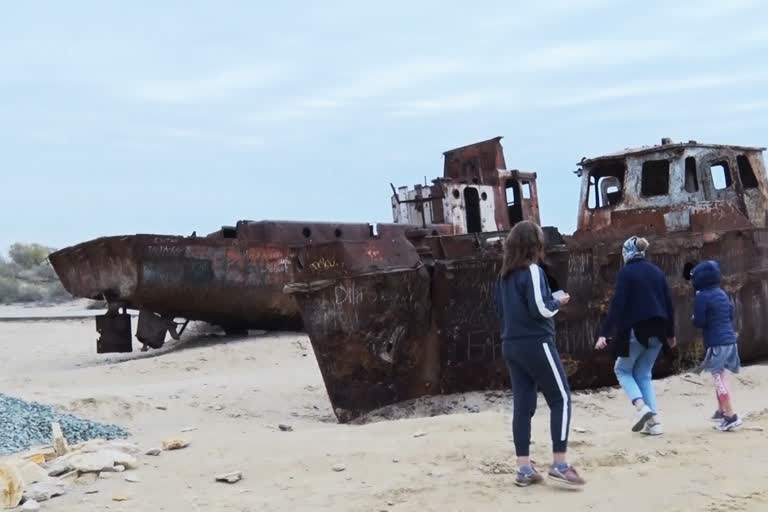Moynaq: Human lust for exploiting natural resources has resulted in the death of the world's fourth-largest lake in central Asia. Aral Sea has shrunk dramatically since the rivers that fed it were largely diverted in a Soviet project to boost cotton production in the arid region.
Now rusting hulks of former fishing boats sit embedded in the sand. Less than sixty years ago the area was under water and was once teaming with marine life.
The 26,000 square miles of what was once lakeland straddles the border between Uzbekistan and Kazakstan.
Irresponsible farming and irrigation drained the lake and now visitors just come to stand and stare.
Strangely tourists are now drawn here to the bleak landscape to see what is left of this environmental catastrophe. The desert near the town of Moynaq was once an important seaport. Now a few thousand residents still call this place 'home'.
The majority of people left when the sea started to disappear causing economic and health problems. Now the trickle of tourism is growing, giving local people a chance to develop small businesses like hostels or enterprises producing souvenirs.
Dimbar Khujamuratova owns a hostel in Myunak which caters for 20 visitors a day. Her daughter Gulchekhra Khujamuratova said, "We have already been working for several years. Last year we got a loan of about 50 million (Uzbekistani some approx $6000) for the development of our hostel. As a result, we're building additional rooms for tourists."
Local tourists pay around 5000 UZS ($6 USD), foreigners pay $10 USD. To expand the business the family took out a loan from the bank and built additional rooms. Their current income can be as much as 5000 USD per month.
In 2017, Uzbekistani President Abdulla Aripov issued a special decree to assist the development of employment for local people.
Deputy Mayor of Moynaq, Arslanbay Utuliev said, "In 2018 Moynaq was visited by 2,000 tourists and this year, according to our calculations, the number of tourists should grow to 5,000 people. Now modern hotels and modern amusement parks are being built and there are several guest houses."
The disappearance of the Aral Sea is considered one of the biggest examples of how humans have poorly exploited and mismanaged natural resources.
Read also: Pak's attempt to polarise, politicise Kashmir at UNHRC rejected: India



